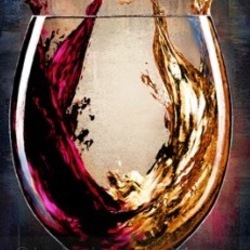White Rose Wines
Veuve Clicquot Ponsardin
Yellow Label Brut Champagne Blend
Not as bad as I remember it. It’s been a while though.
Slightly, bruised pear & red & green apple, lime zest, lemon pulp, some ginger white spice w/ a touch of heat, limestone mixed in volcanic minerals, crisp chalkiness, sea spray, yeasty bread dough, yellow & white spring flowers, lively acidity and a balanced & nicely polished elegant finish that last 45 seconds and lands on volcanics.
Emirates SFO. — 24 days ago
Château d'Esclans
Whispering Angel Côtes de Provence Rosé Blend 2024
A little dry and a little sweet. A great blend. — 3 days ago
Louis Roederer
Cristal Brut Champagne Chardonnay Pinot Noir Blend 2014
Medium light lemon straw colour , very fine constant bubbles . Quite restrained and mineral on the nose , with some light toasty notes , white flowers , lemon oil . Quite closed . On the palate this is really quite intense and mineral , oyster shell , chalky , limestone hints . Some lemon pith and a lightly toasty with a saline hint , fresh acidity , long and detailed , refined and very balanced . Really young still , needs time to open and will be long lived . Better in 5- 10 years and will last well a further 5-10 years — 13 days ago
Château d'Yquem
Sauternes Sémillon-Sauvignon Blanc Blend 2001
Outrageous. Intense pretty and bright. Lemon curd, orange rind, lifted zesty fruit. Just spectacular — 10 days ago
Salon
'S' Blanc de Blancs Le Mesnil Brut Chardonnay 2007
Quite light lemon yellow , quite difficult to judge the perlage in this glass but apparently fine and persistent, though on the palate the bubbles are quite discreet in nature . On the nose this is quite aromatic and rich with toasted lemon sherbet , sea shell , camomile and some buttered brioche . On the palate this also shows good richness and density , with more of the lemon peel , chalky , oyster shell character , with some buttered brioche notes on the finish . This is quite intense and long on the palate , though the perlage does subside quite a lot it is integrated. Fresh chalky acidity. Very much shows like a grand cru white Burgundy with bubbles. Still quite youthful and fresh but showing well , energetic but focused . From now and over the next 10 or so years . — a month ago







Chris Zitzman

The 2024 Ameztoi “Rubentis” carries a subtle, almost rose gold hue in the glass. The nose contains bright red berry notes, but it’s on the palate where this wine absolutely shines.
The blend of hondarrabi zuri and hondarrabi beltza are at the heart of the wine, but its real beauty stems from the method to its marriage.
Both grapes are hand-picked, but then placed in hoppers from where they are de-stemmed together, then pressed together, then allowed to naturally ferment together. Towards the end of the process the tanks are closed to preserve the naturally occurring carbonation.
As is traditional/preferred method in Getaria, the tanks themselves are kept near freezing to solidify the blend’s effervescent character.
The result is a robust-yet-effervescent rose whose roots date back to the late 1800’s.
The craft used to make this very wine made rose popular in the Baque region of Spain LONG before rose became so popular around the world. — 5 days ago